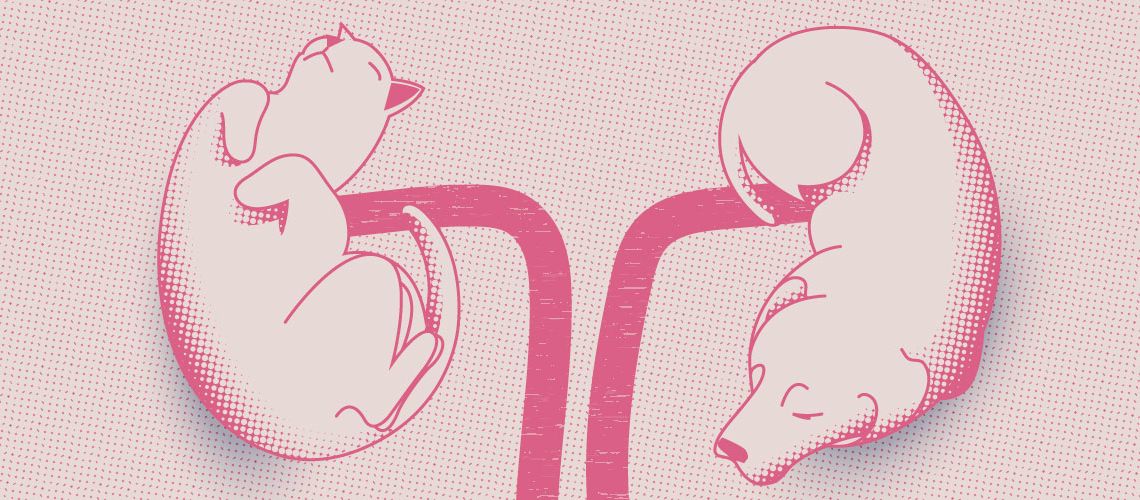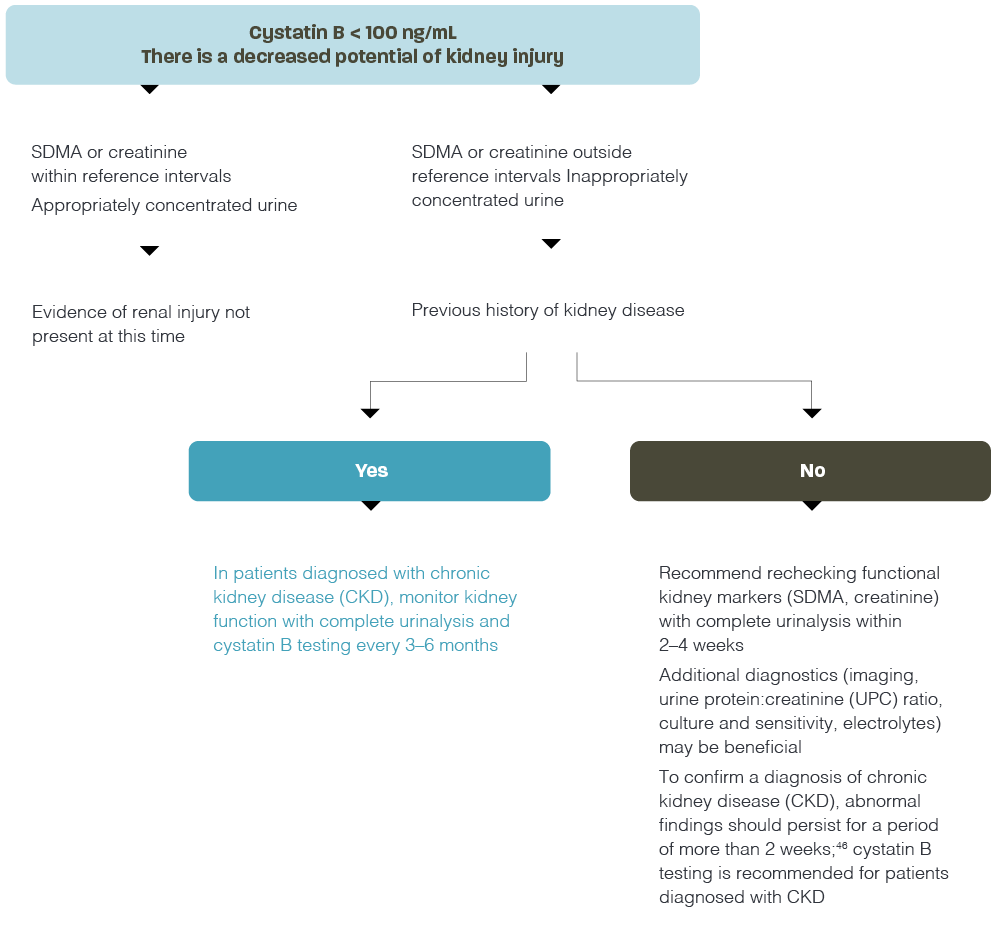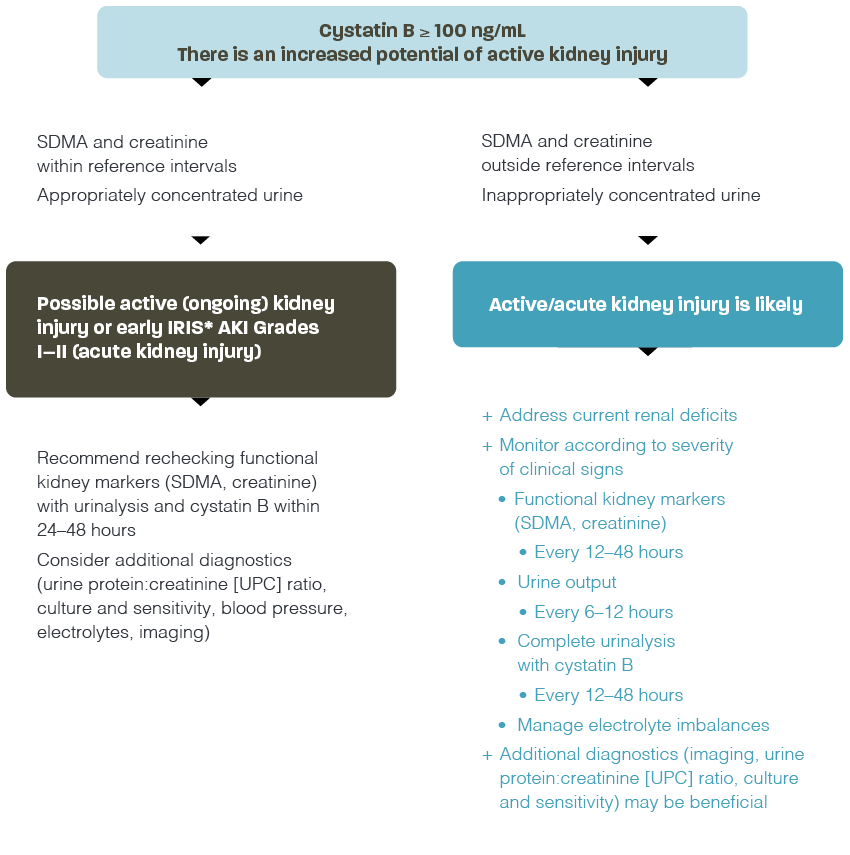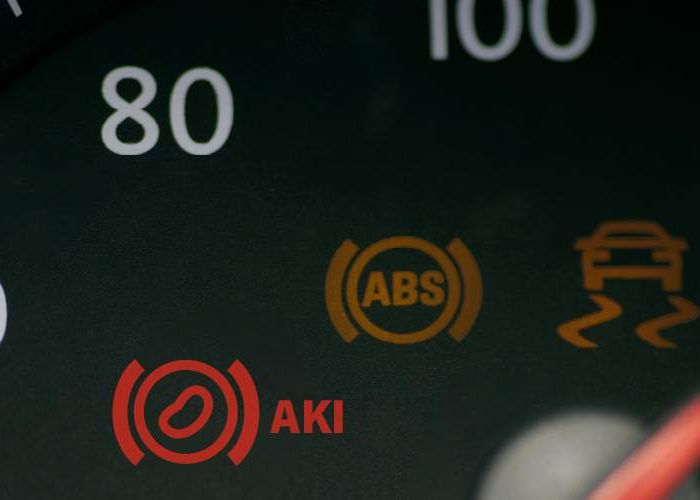

Protocol Guidance for Measuring Cystatin B in Pets
Diagnosing kidney injury in pets can be challenging because it's often subclinical until significant trauma has occurred. Until recently, diagnosing a patient at the time of kidney injury was considered almost impossible. However, with new and advanced kidney injury protocols, early detection is possible, and it's critical to providing the best prognosis for cats and dogs that experience kidney injury. A core component of this protocol is the measurement of cystatin B, a urine-based kidney biomarker that helps detect kidney injury, even without changes in kidney function. Here's a guide to using this biomarker in kidney injury protocols.
What is Cystatin B?
Cystatin B is a protein that is present inside the cells of renal tubular epithelium. When these cells are injured or destroyed, this protein is released into the urine. Because of this, cystatin B is considered a biomarker that can indicate kidney injury.43,44 Detecting kidney injury early, before it causes significant damage or progresses to chronic disease, is crucial for veterinarians and the pets they care for.
There are several cases where where assessing kidney injury alongside kidney function is essential, including:
- Potential toxin exposure.
- Tracking treatment and recovery after a kidney injury.
- Monitoring for any progression from IRIS CKD Stage 1 in canine patients.
- Screening for risk of injury secondary to NSAID use.
- Monitoring kidneys in patients at risk of an ischemic event like heat stroke, GDV, or acute pancreatitis.
- Assessing patients after a hypotensive event during anesthesia.
Using Cystatin B Effectively in Kidney Injury Protocols
To maximize the benefit of any new test, it's essential to understand what the test is measuring, how to interpret the result, and what guidance the test result gives for next steps in diagnostics and treatment.
Cystatin B's location as an intracellular protein in renal tubular epithelium gives a veterinarian specific indication of kidney injury affecting the renal tubules. This is a new and unique test for the veterinary industry, allowing visibility into kidney damage that previously was only detected after functional markers have increased. Cystatin B concentration is measured in the urine and reflects injury to the renal tubules. Urine cystatin B concentration < 100 ng/mL suggests kidney injury is unlikely. Concentrations >/= 100ng suggest an increased likelihood of kidney injury.
There are a few specific points to remember for accurate interpretation. First, the cystatin B result must be considered in the context of other commonly used functional kidney biomarkers including SDMA, creatinine and a complete urinalysis. In addition, consider patient history including medications that may contribute to nephrotoxicity.
Cystatin B Values Below 100 ng/ml
Once all kidney biomarkers and values are available, consider the following kidney injury protocol algorithm:
- If cystatin B is below 100 ng/ml, SDMA and/or creatinine is within the reference interval, and urine is appropriately concentrated, then evidence of renal injury is not likely in the patient.
- If cystatin B is below 100 ng/ml, SDMA and/or creatinine is outside the reference intervals, and urine is inappropriately concentrated, the next step is to identify if there is a previous history of kidney disease.
- If previous kidney disease is present, kidney function should be monitored every 3-6 months with a complete urinalysis and cystatin B testing.
- If there is no history of kidney disease, kidney function biomarkers, including SDMA, creatinine, and a complete urinalysis, should be rechecked in 2-4 weeks. Additional diagnostics (including imaging, urine protein:creatinine (UPC) ratio, urine culture and sensitivity, and electrolytes) may be helpful.

Cystatin B Values Equal to or Above 100 ng/ml
However, the algorithm is different for the interpretation of increased results:
- If cystatin B is above or equal to 100 ng/mL, but SDMA and/or creatinine are within reference intervals, and urine is appropriately concentrated, there's a possible active (ongoing) kidney injury or early IRIS AKI grades I-II (acute kidney injury). The most appropriate clinical recommendation is to recheck functional kidney markers with urinalysis and cystatin B within 24-48 hours and consider additional diagnostics such as urine protein:creatinine (UPC) ratio, culture and sensitivity, blood pressure, electrolytes, and imaging.
- If cystatin B is above/equal to 100 ng/mL and SDMA and/or creatinine are outside reference levels while urine isn't appropriately concentrated, then an active/acute kidney injury is likely. The veterinarian needs to address current renal deficits, monitor according to the severity of clinical signs, and consider additional diagnostics such as those listed above. This is a more intense process that should be communicated to the client for aligned expectations. Functional kidney markers (SDMA and creatinine), ideally a complete urinalysis, and cystatin B should be monitored every 12-48 hours, and urine output should be measured every 6-12 hours.
When a patient is diagnosed in the advanced stages of kidney disease, treatment becomes more intensive and expensive, and the prognosis may worsen. Early intervention provides an opportunity to stabilize or, in some cases, reverse changes resulting from injury that might go unrecognized. A clinic can elevate its care for kidney injury patients by having set cystatin B protocols and utilizing the guidance for an earlier diagnosis.

Algorithm Note:
+ Certain medications may contribute to nephrotoxicity.
Consider risk/benefit of such medications in overall management of the patient.
+ Under experimental conditions, doxycycline hyclate has been shown to interfere with urine cystatin B recovery when spiked into specimens with urine cystatin B concentrations below 250 ng/mL.6
References: https://www.thevetiverse.com/en/latest/sdma-references/







